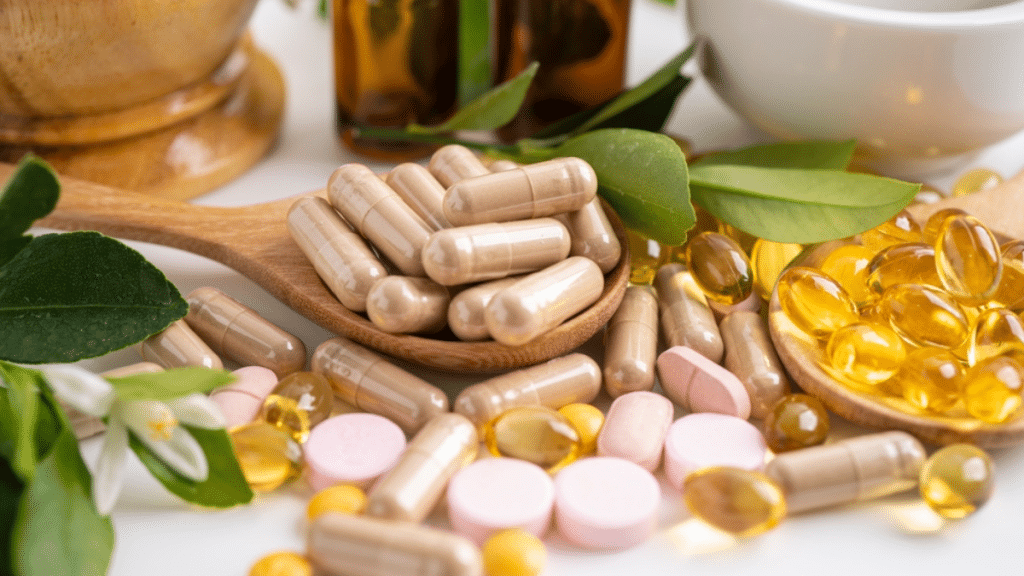When pain and inflammation strike—whether it’s from arthritis, injury, or everyday wear and tear—the go-to solution for many is a nonsteroidal anti-inflammatory drug, or NSAID. Medications like ibuprofen and naproxen can be effective for short-term relief, but they’re not always the best long-term option. For some people, NSAIDs can cause unwanted side effects like stomach upset, high blood pressure, or even liver or kidney issues with prolonged use.
So, what can you do if you want to manage inflammation naturally? The good news is that several science-backed, gentle-on-the-body alternatives exist. Whether you’re looking for everyday wellness support or a more holistic approach to chronic pain, here’s a deep dive into natural options worth exploring.
1. Turmeric and Curcumin
Let’s start with a favorite in the natural wellness world: turmeric, and more specifically, its active compound curcumin. Curcumin is known for its potent anti-inflammatory and antioxidant properties. In fact, studies have shown that in some cases, curcumin can be as effective as low-dose NSAIDs in reducing inflammation—without the harsh side effects.
You can take turmeric as a supplement (look for one that includes black pepper or piperine to boost absorption), or add it to your meals in powdered form. Golden milk lattes, anyone?
2. Omega-3 Fatty Acids
You’ve probably heard that omega-3s are good for your heart, but they’re also powerful inflammation-fighters. Found in fatty fish like salmon and mackerel, as well as flaxseeds and walnuts, omega-3 fatty acids can reduce joint stiffness and improve mobility—especially in those with rheumatoid arthritis.
If you don’t eat much fish, consider a high-quality fish oil or vegan omega-3 supplement. These healthy fats help dial down the body’s inflammatory response at a cellular level.
3. Ginger
Like turmeric, ginger is another root with natural anti-inflammatory and pain-relieving properties. It contains compounds called gingerols that help inhibit inflammatory enzymes in the body. Ginger may also help with muscle soreness, menstrual pain, and osteoarthritis symptoms.
You can enjoy ginger as a tea, fresh in smoothies, or in capsule form if you’re looking for a more concentrated dose.
4. Topical Natural Pain Relievers
Sometimes, external inflammation—like joint or muscle pain—can benefit more from something applied directly to the skin. That’s where natural topical creams and gels come in. Look for products with ingredients like arnica, menthol, camphor, eucalyptus, or CBD, which can provide localized relief without the systemic side effects of NSAIDs.
If you’re exploring options, be sure to check joint pain cream labels for quality ingredients and real user reviews. A good natural joint cream can make a noticeable difference, especially when combined with gentle movement or massage.
5. Heat and Cold Therapy
One of the most time-tested (and often overlooked) natural solutions for inflammation is temperature therapy.
- Cold helps reduce inflammation and numb sharp pain—great for injuries or flare-ups.
- Heat relaxes muscles, improves blood flow, and soothes chronic stiffness—ideal for ongoing aches or arthritis.
Rotating between the two, depending on the condition, can help manage pain without any medication at all.
6. Magnesium
Chronic inflammation is often linked to low magnesium levels. This essential mineral plays a role in over 300 enzymatic functions in the body—including regulating inflammatory responses. Magnesium also helps relax muscles and can ease tension-related pain, including headaches and cramps.
Natural sources of magnesium include leafy greens, nuts, seeds, legumes, and whole grains. You can also try magnesium supplements or soak in Epsom salts (magnesium sulfate) for muscle relief.
7. Exercise and Gentle Movement
Although it might seem counterintuitive to move when you’re in pain, low-impact exercise like walking, swimming, yoga, or tai chi can actually reduce inflammation over time. Movement boosts circulation, strengthens supportive muscles, and encourages joint flexibility—all while triggering the body’s natural anti-inflammatory processes.
The key is consistency. Even 20–30 minutes of movement most days of the week can offer real benefits.
8. Anti-Inflammatory Diet
What you eat plays a huge role in inflammation levels. A diet high in processed foods, refined sugar, and trans fats can stoke the inflammatory fire, while nutrient-dense whole foods help keep it in check.
Focus on:
- Colorful fruits and vegetables (rich in antioxidants)
- Whole grains
- Lean proteins
- Healthy fats (like olive oil, nuts, seeds)
- Herbs and spices (like turmeric, ginger, cinnamon)
Cutting down on sugar and processed carbs while loading up on real, whole foods is one of the most sustainable ways to manage inflammation naturally.
Final Thoughts
NSAIDs certainly have their place, especially when you need fast, short-term relief. But for those seeking a gentler, more sustainable solution, nature offers plenty of powerful tools. From anti-inflammatory superfoods and supplements to targeted topicals and lifestyle changes, there are many ways to support your body’s healing processes without relying solely on medication.
As always, it’s smart to consult a healthcare provider before making big changes—especially if you’re managing a chronic condition or are on other medications. But with the right combination of natural strategies, you can take proactive steps toward feeling better—every single day.
